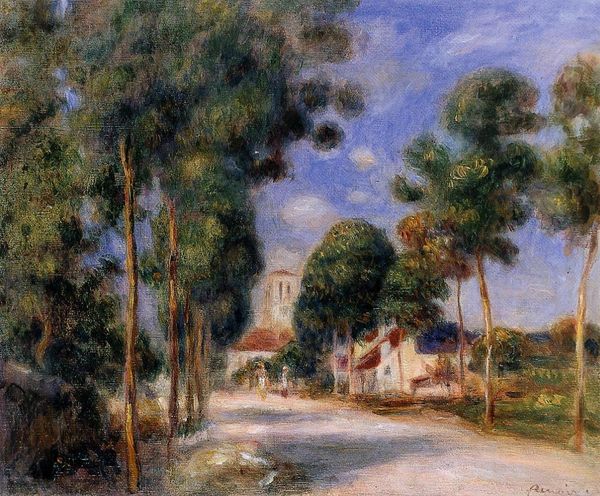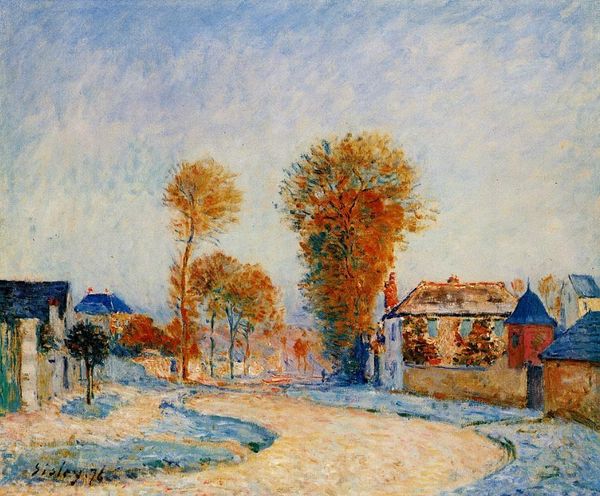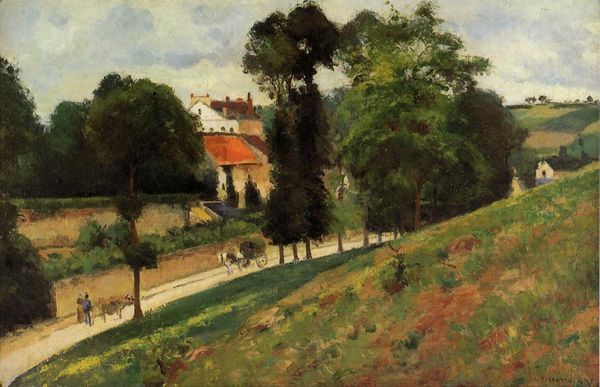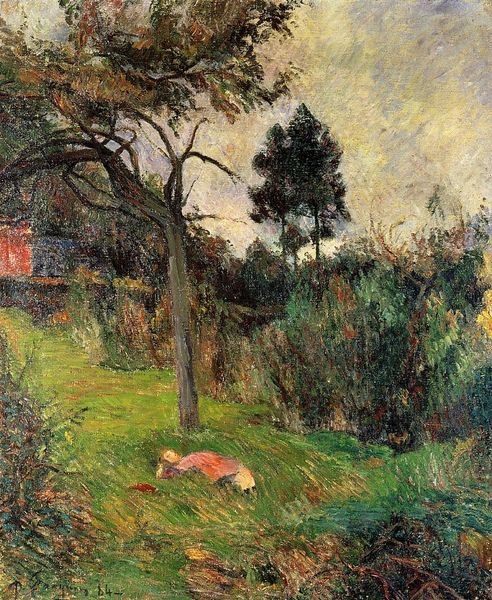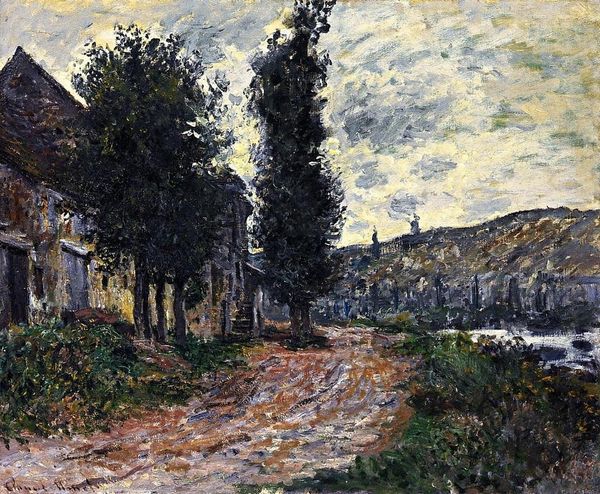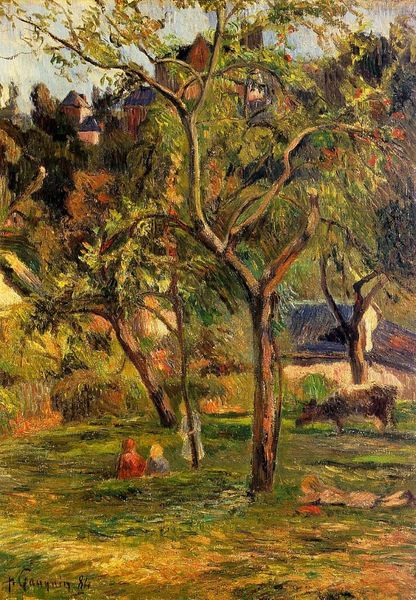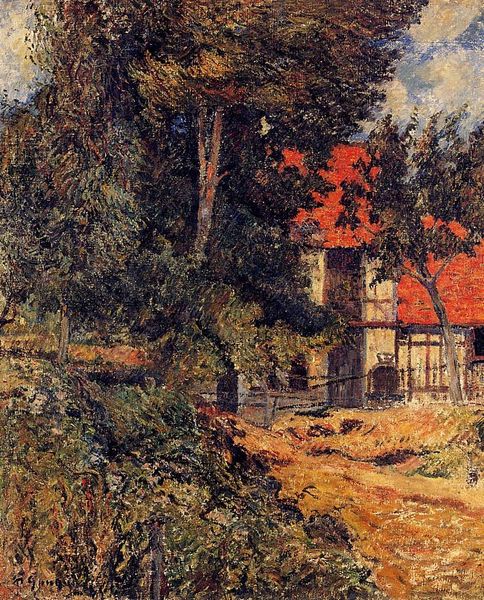
painting, plein-air, oil-paint
#
painting
#
impressionism
#
plein-air
#
oil-paint
#
landscape
#
impressionist landscape
#
figuration
#
oil painting
#
post-impressionism
Copyright: Public domain
Curator: Paul Gauguin's "White House," painted in 1885, offers us a glimpse into his Impressionist-leaning period. The setting seems quite pastoral, a humble abode nestled in a landscape rendered with oil on canvas. Editor: My first thought is, how solid this painting feels. The thick impasto and muted colors give it a real earthiness, almost a weighty presence, far from the airy lightness often associated with Impressionism. Curator: Exactly! That’s partly why this period is important, marking a shift towards what would become Post-Impressionism. I believe the painting can also be read within the context of Gauguin’s search for a more “authentic” life, coinciding with his initial rejection of bourgeois Parisian values. How does the portrayal of the house play into that narrative? Editor: Well, considering his later interest in more ‘primitive’ subject matter, the house reads as almost disappointingly conventional, bourgeois as you say! But, looking at how he's layered the paint, the brushstrokes so visible – it speaks to a real labor, a tangible engagement with the materials. The cow there suggests a self-sufficiency, the beginning of a rural economy far removed from the industrialized city. Curator: Good point. And it isn't just about rural escape, it’s also about questioning traditional hierarchies in art, and, subsequently, society itself. Gauguin, like many artists of the time, saw the potential to disrupt dominant modes of seeing. His choice of seemingly unremarkable subject matter, like this house and farmland, suggests an interest in everyday life of the working class, albeit romanticized. Editor: Right. Though romanticized it may be, look at the color palette, too, not the vibrant, commercially-produced colors, but muddier, more grounded hues. He's not trying to give us a perfect scene but showing something very real through his manipulations of the materials. The house is being made, almost built before your very eyes through layers of thick, physical paint. Curator: That emphasis on construction also feels crucial. For Gauguin and others, artmaking wasn't about representing reality passively; it was an active intervention, imbued with the artist's own subjective vision, reflecting broader social critiques. The brushstrokes function as gestures of social and artistic liberation. Editor: Ultimately, by understanding how Gauguin constructed this artwork, both materially and ideologically, we can unearth those values, and how radical they were for that particular time. Curator: Indeed. This “White House” is more than just a pretty picture; it's a portal to understanding the artist's changing vision of society.
Comments
No comments
Be the first to comment and join the conversation on the ultimate creative platform.
